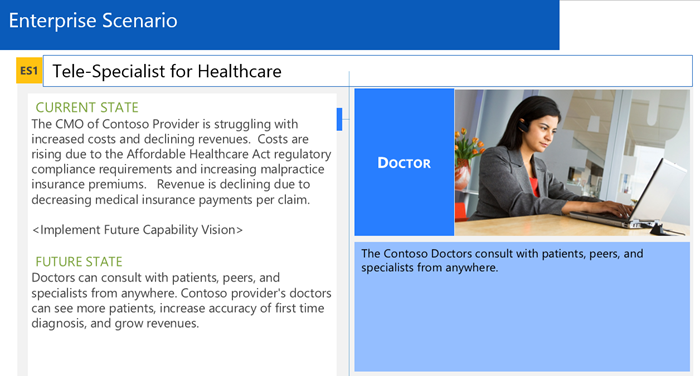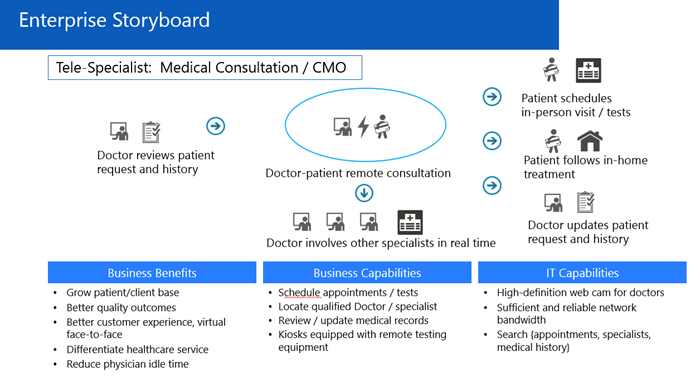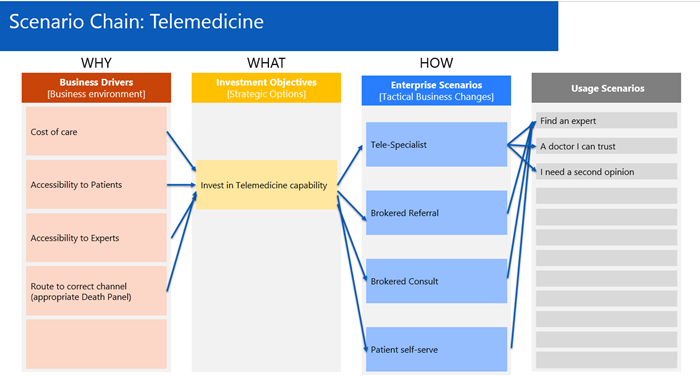How Can Enterprise Architects Drive Business Value the Agile Way?
An Enterprise Architect can have a tough job when it comes to driving value to the business. With multiple stakeholders, multiple moving parts, and a rapid rate of change, delivering value is tough enough. But what if you want to accelerate value and maximize business impact?
Enterprise Architects can borrow a few concepts from the Agile world to be much more effective in today’s world.
A Look Back at How Agile Helped Connect Development to Business Impact …
First, let’s take a brief look at traditional development and how it evolved. Traditionally, IT departments focused on delivering value to the business by shipping big bang projects. They would plan it, build it, test it, and then release it. The measure of success was on time, on budget.
Few projects ever shipped on time. Few were ever on budget. And very few ever met the requirements of the business.
Then along came Agile approaches and they changed the game.
One of the most important ideas was a shift away from thick requirements documentation to user stories. Developers got customers telling stories about what they wanted the future solution to do. For example, a user story for a sale representative might look like this:
“As a sales rep, I want to see my customer’s account information so that I can identify cross-sell and upsell opportunities.”
The use of user stories accomplished several things. First, user stories got the development teams talking to the business users. Rather than throwing documents back and forth, people started having face-to-face communication to understand the user stories. Second, user stories helped chunk bigger units of value down into smaller units of value. Rather than a big bang project where all the value is promised at the end of some long development cycle, a development team could now ship the solution in increments, where each increment was a prioritized set of stories. The user stories effectively create a shared language for value.
Third, it made it easier to test the delivery of value. Now the user and the development team could test the solution against the user stories and acceptance criteria. If the story met acceptance criteria, the user would acknowledge that the value was delivered. In this way, the user stories created both a validation mechanism and a feedback loop for delivering and acknowledging value.
In the Agile world, bigger stories are called epics, and collections of stories are called themes. Often a story starts off as an epic until it gets broken down into multiple stories. What’s important here is that the collections of stories serve as a catalog of potential value. Specifically, this catalog of stories reflects potential value with real stakeholders. In this way, Agile helps drive customer focus and customer connection. It’s really effective stakeholder management in action.
Agile approaches have been used in software projects large and small. And they’ve forever changed how developers and project managers approach projects.
A Look at How Agile Can Help Enterprise Architecture Accelerate Business Value …
But how does this apply to Enterprise Architects?
As an Enterprise Architect, chances are you are responsible for achieving business outcomes. You do this by driving business transformation. The way you achieve business transformation is through driving capability change including business, people, and technical capabilities.
That’s a tall order. And you need a way to chunk this up and make it meaningful to all the parties involved.
The Power of Scenarios as Units of Value for the Enterprise
This is where scenarios come into play. Scenarios are a simple way to capture pains, needs and desired outcomes. You can think of the desired outcome as the future capability vision. It’s really a story that helps articulate the art of the possible. More precisely, you can use scenarios to help build empathy with stakeholders for what value will look like, by painting a conceptual scene of the future.
An Enterprise scenario is simply a chunk of organizational change, typically about 3-5 business capabilities, 3-5 people capabilities, and 3-5 technical capabilities.
If that sounds like a lot of theory, let’s step into an example to show what it looks like in practice.
Let’s say you’re in a situation where you need to help a healthcare provider change their business.
You can come up with a lot of scenarios, but it helps to start with the pains and needs of the business owner. Otherwise, you might start going through a bunch of scenarios for the patients or for the doctors. In this case, the business owner would be the Chief Medical Officer or the doctor of doctors.
Scenario: Tele-specialist for Healthcare
If we walk the pains, needs, and desired outcomes of the Chief Medical Officer, we might come up with a scenario that looks something like this, where the CURRENT STATE reflects the current pains, and needs, and the FUTURE STATE reflects the desired outcome.
CURRENT STATE
Here is an example of the CURRENT STATE portion of the scenario:
The Chief Medical Officer of Contoso Provider is struggling with increased costs and declining revenues. Costs are rising due to the Affordable Healthcare Act regulatory compliance requirements and increasing malpractice insurance premiums. Revenue is declining due to decreasing medical insurance payments per claim.
FUTURE STATE
Here is an example of the FUTURE STATE portion of the scenario:
Doctors can consult with patients, peers, and specialists from anywhere. Contoso provider's doctors can see more patients, increase accuracy of first time diagnosis, and grow revenues.
Storyboard for the Future Capability Vision
It helps to be able to picture what the Future Capability Vision might look like. That’s where storyboarding can come in. An Enterprise Architect can paint a simple scene of the future with a storyboard that shows the Future Capability Vision in action. This practice lends itself to whiteboarding, and the beauty of a whiteboard is you can quickly elaborate where you need to, without getting mired in details.
As you can see in this example storyboard of the Future Capability Vision, we listed out some business benefits, which we could then drill-down into relevant KPIs and value measures. We’ve also outlines some building blocks required for this Future Capability Vision in the form of business capabilities and technical capabilities.
Now this simple approach accomplishes a lot. It helps ensure that any technology solution actually connects back to business drivers and pains that a business decision maker actually cares about. This gets their fingerprints on the solution concept. And it creates a simple “flashcard” for value. If we name the Enterprise scenario well, then we can use it as a handle to get back to the story we created with the business of a better future.
The obvious thing this does, aside from connecting IT to the business, is it helps the business justify any investment in IT.
And all we did was walk through one Enterprise Scenario.
But there is a lot more value to be found in the Enterprise. We can literally explore and chunk up the value in the Enterprise if we take a step back and add another tool to our toolbelt: the Scenario Chain.
Scenario Chain: Chaining the Industry Scenarios to Enterprise Scenarios
The Scenario Chain is another powerful conceptual visualization tool. It helps you quickly map out what’s happening in the marketplace in terms of industry drivers or industry scenarios. You can then identify potential investment objectives. These investment objectives lead to patterns of value or patterns of solutions in the Enterprise, which are effectively Enterprise scenarios. From the Enterprise scenarios, you can then identify relevant usage scenarios. The usage scenarios effectively represent new ways of working for the employees, or new interaction models with customers, which is effectively a change to your value stream.
With one simple glance, the Scenario Chain is a bird’s-eye view of how you can respond to the changing marketplace and how you can transform your business. And, by using Enterprise scenarios, you can chunk up the change into meaningful units of value that reflect pains, needs, and desired outcomes for the business. And, because you have the fingerprints of stakeholders from both business and IT, you’ve effectively created a shared vision for the future, that has business impact, a justification for investment, and it creates a pull-through mechanism for additional value, by driving the adoption of the usage scenarios.
Let’s elaborate on adoption and how scenarios can help accelerate business value.
Using Scenario to Drive Adoption and Accelerate Business Value
Driving adoption is a key way to realize the business value. If nobody adopts the solution, then that’s what Gartner would call “Value Leakage.” Value Realization really comes down to governance, measurement, and adoption.
With scenarios at your fingertips, you have a powerful way to articulate value, justify business cases, drive business transformation, and accelerate business value. The key lies in using the scenarios as a unit of value, and focusing on scenarios as a way to drive adoption and change.
Here are three ways you can use scenarios to drive adoption and accelerate business value:
1. Accelerate Business Adoption
One of the ways to accelerate business value is to accelerate adoption. You can use scenarios to help enumerate specific behavior changes that need to happen to drive the adoption. You can establish metrics and measures around specific behavior changes. In this way, you make adoption a lot more specific, concrete, intentional, and tangible.
This approach is about doing the right things, faster.
2. Re-Sequence the Scenarios
Another way to accelerate business value is to re-sequence the scenarios. If your big bang is way at the end (way, way at the end), no good. Sprinkle some of your bangs up front. In fact, a great way to design for change is to build rolling thunder. Put some of the scenarios up front that will get people excited about the change and directly experiencing the benefits. Make it real.
The approach is about putting first things first.
3. Identify Higher Value Scenarios
The third way to accelerate business value is to identify higher-value scenarios. One of the things that happens along the way, is you start to uncover potential scenarios that you may not have seen before, and these scenarios represent orders of magnitude more value. This is the space of serendipity. As you learn more about users and what they value, and stakeholders and what they value, you start to connect more dots between the scenarios you can deliver and the value that can be realized (and therefore, accelerated.)
This approach is about trading up for higher value and more impact.
As you can see, Enterprise Architects can drive business value and accelerate business value realization by using scenarios and storyboarding. It’s a simple and agile approach for connecting business and IT, and for shaping a more Agile Enterprise.
I’ll share more on this topic in future posts. Value Realization is an art and a science and I’d like to reduce the gap between the state of the art and the state of the practice.
You Might Also Like
3 Ways to Accelerate Business Value
6 Steps for Enterprise Architecture as Strategy
Cognizant on the Next Generation Enterprise
The Mission of Enterprise Services


